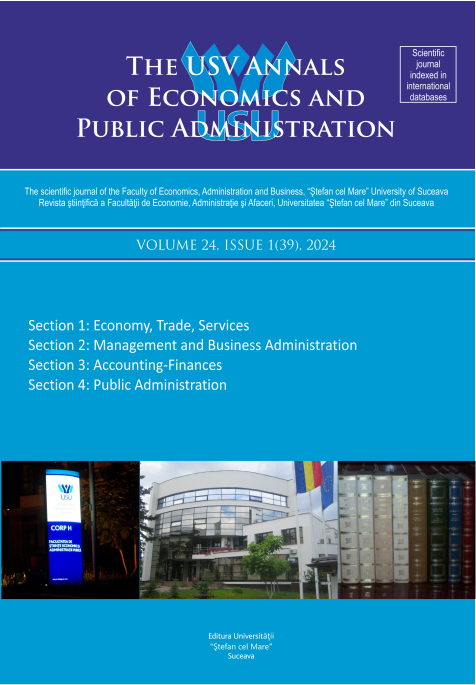The Impact of Remittances on Eastern European Economies: A Comparative Case Study of Romanian Regions
DOI:
https://doi.org/10.4316/aepa.2024.24.1(39).20-27Abstract
Despite concerted efforts to promote economic development, governance improvements, and enhanced social welfare across the European Union, significant disparities persist between regions. In Eastern Europe, each country and region face its distinct challenges and opportunities, necessitating tailored approaches to address the specific needs and conditions of each area. These disparities manifest as variations in GDP growth rates, income levels, and employment opportunities. While some countries have successfully integrated into the EU, benefiting from access to broader markets and investment, others struggle with corruption, weak governance, and innovation deficits. Additionally, economic disparities exist not only between countries but also within them, with urban areas, especially capital cities, often outperforming rural regions that may still be struggling with underemployment and infrastructural deficiencies.
A crucial element of these economic disparities is the role of remittances—funds sent home by migrants working abroad, which significantly impact the economies of many Eastern European countries. For instance, in Romania, remittances constitute a notable percentage of the GDP and notably exceed the 2023 GDP allocation for the country's education system. These funds are vital for alleviating poverty, enhancing living standards, and stimulating economic growth. However, reliance on remittances can also introduce vulnerabilities, especially with economic downturns in host countries or shifts in migration policies.
This paper aims to analyse the impact of remittances on regional development within Romanian regions, in context with the EU and neighbouring countries, using existing statistical data. It seeks to identify correlations between remittances and regional development to inform more effective policy-making at the decision-making level.

